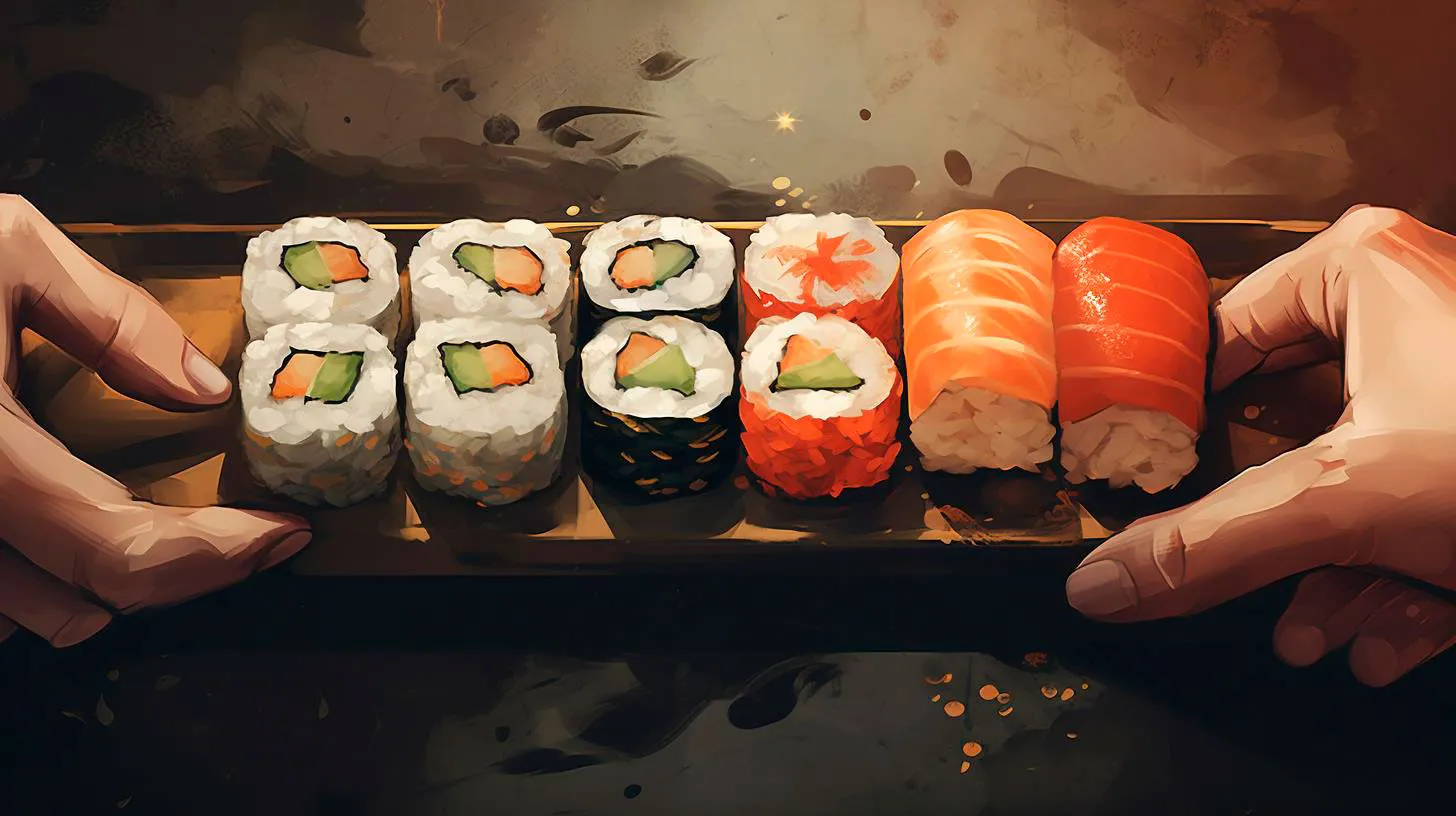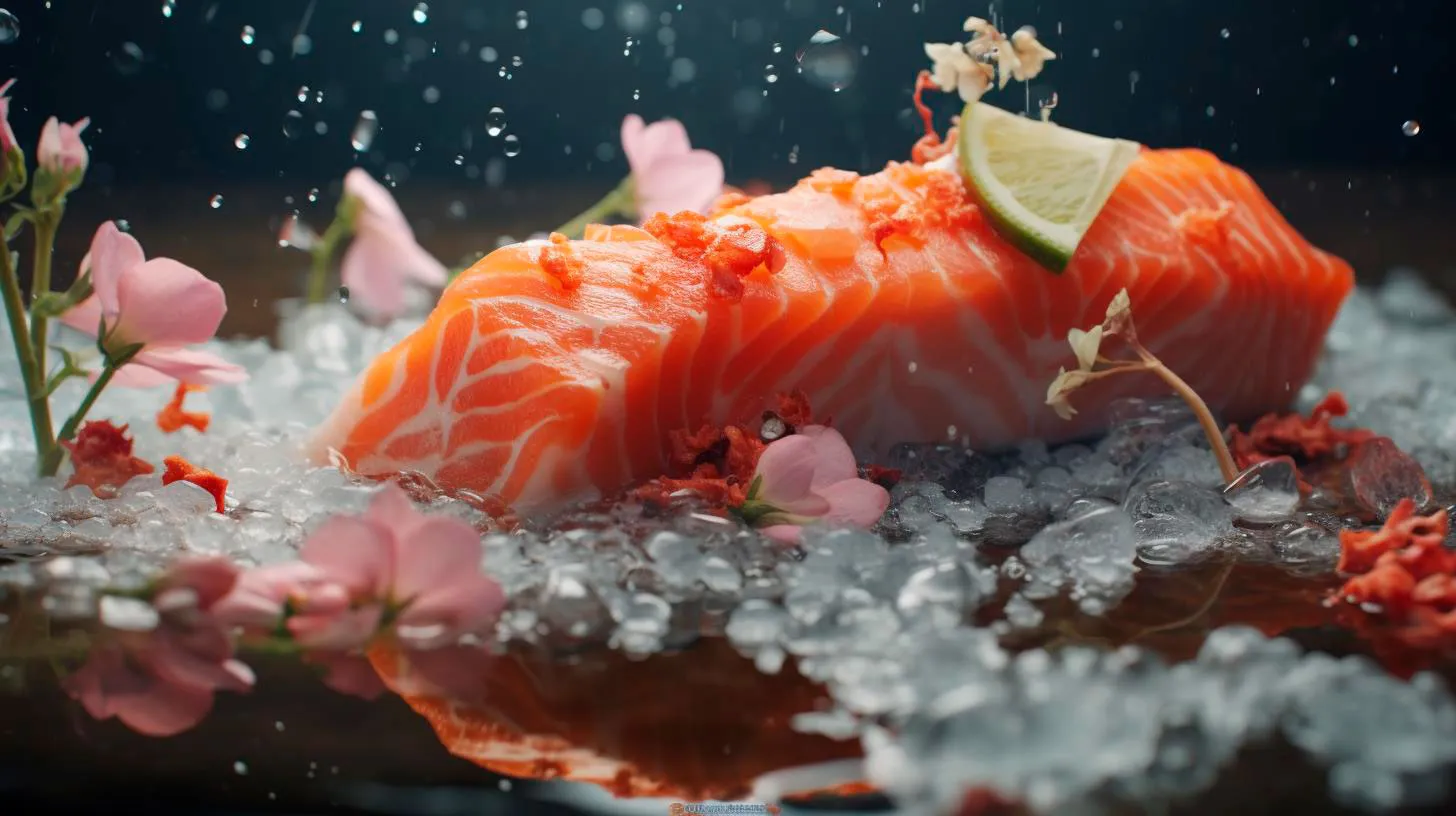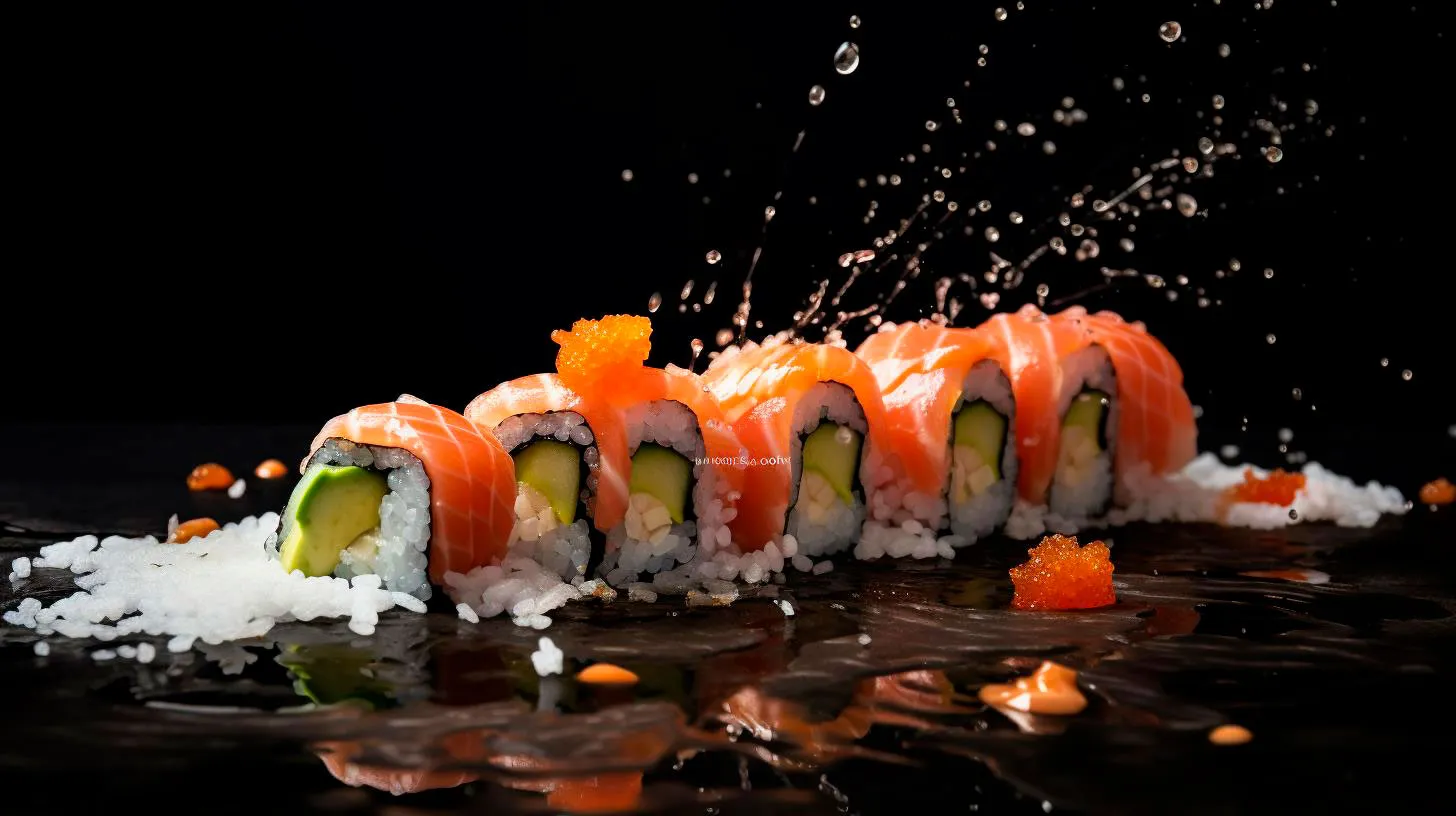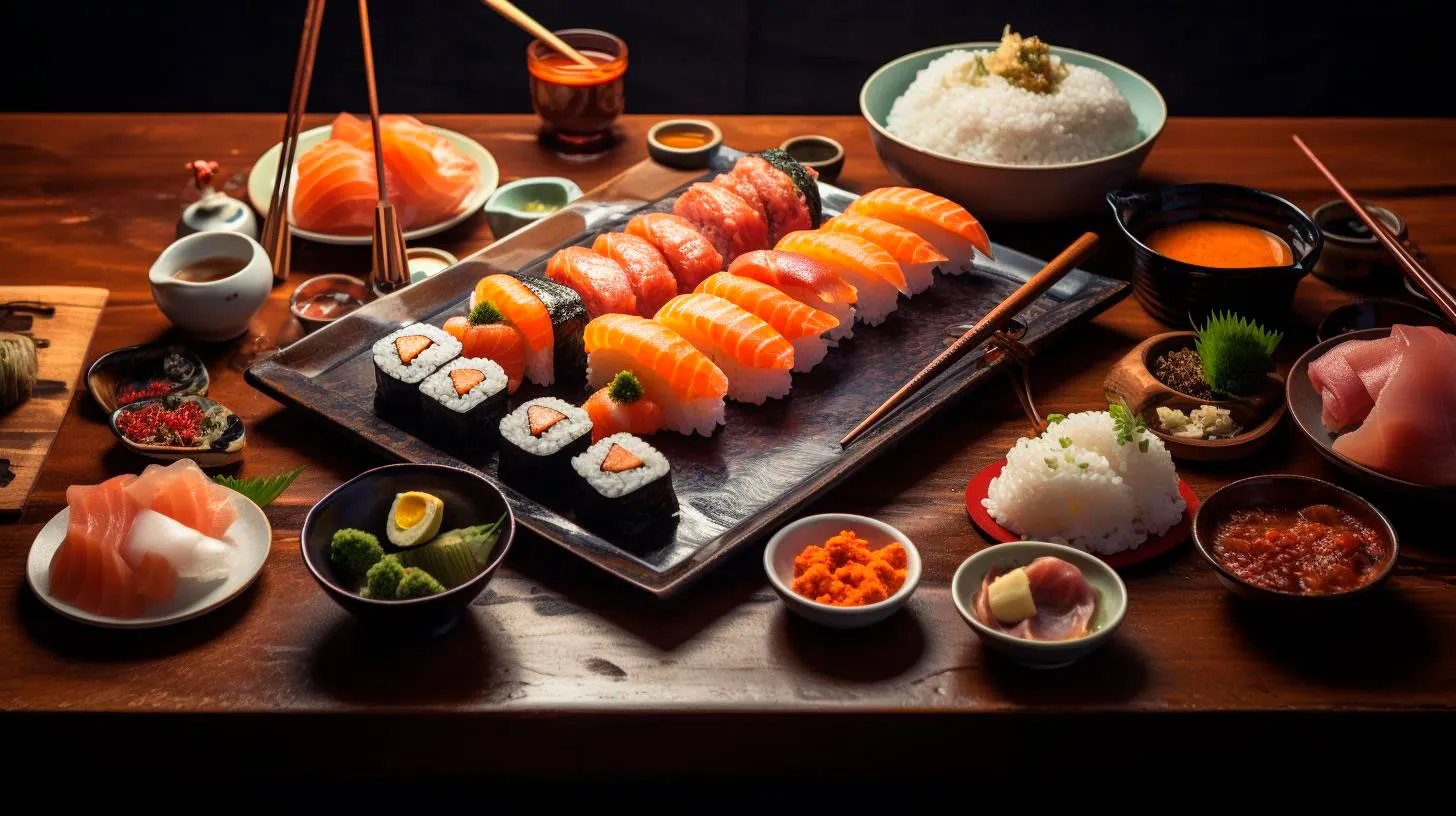The Fusion of Tradition and Innovation: Modernizing Sushi Aesthetics
However, with the advent of modern technology and evolving tastes, the world of sushi is experiencing a fascinating fusion of tradition and innovation. Today, we delve into how sushi aesthetics have been modernized, combining age-old techniques with cutting-edge advancements.
1. Creative Sushi Presentations
Modern sushi chefs are pushing the boundaries of traditional presentation methods, giving their creations a unique and eye-catching twist. Here are some innovative ways sushi is being presented in today’s culinary landscape:
- Stacked Sushi: Slices of various fish and other ingredients are beautifully stacked to create visually appealing sushi towers. This contemporary arrangement adds height and dimension to the traditional sushi plate.
- Sushi Burritos: Inspired by Latin American cuisine, sushi burritos wrap an assortment of sushi fillings in a large sheet of seaweed, resembling a burrito. This novelty presentation style offers a convenient and on-the-go sushi experience.
- Nigiri Art: Sushi artisans are transforming nigiri, a classic sushi style, into miniature edible pieces of art. Intricate designs made from vibrant fish slices are carefully arranged on bite-sized mounds of rice, leaving customers amazed by both taste and appearance.
2. Fusion of Global Flavors
Traditional sushi predominantly features Japanese flavors, but modernization has led to a fusion of global tastes, creating exciting new combinations that push boundaries. Here are some examples of how sushi has embraced international flavors:
- Mexican-inspired Sushi: Sushi rolls featuring ingredients like avocado, spicy sauces, and jalapenos bring a bold and zesty twist to traditional sushi. These Mexican-inspired rolls offer a fiery kick that tantalizes taste buds.
- Hawaiian Poke Sushi: This fusion combines the refreshing Hawaiian poke dish with sushi, creating a delectable blend of marinated chunks of fish, colorful vegetables, and sushi rice. The result is a burst of tropical flavors in each bite.
- Sushi Burgers: Blending Japanese and American elements, sushi burgers swap the traditional bun with rice patties and fillings such as teriyaki chicken or tempura shrimp. These eclectic creations provide a novel way to enjoy sushi flavors in a familiar burger format.
3. Sustainable Sushi
As environmental awareness grows, so does the emphasis on sustainability within the sushi industry. With concerns over declining fish populations and overfishing, sushi establishments are taking proactive steps towards ethical sourcing and responsible practices. Here are some key takeaways regarding sustainable sushi:
- Locally Sourced Ingredients: Sushi chefs are increasingly prioritizing locally sourced, seasonal ingredients, reducing the carbon footprint associated with long-distance transportation.
- Avoiding Endangered Species: With a focus on conservation, responsible sushi establishments aim to avoid using fish species that are overfished or on the brink of extinction.
- Using Alternative Ingredients: Innovative techniques, such as replacing traditional fish with plant-based alternatives or sustainably farmed options, offer sustainable alternatives to classic sushi ingredients without compromising on taste or quality.
4. Technology’s Influence on Sushi
In the digital age, technology has left no industry untouched, including the world of sushi. While preserving tradition, technology has found ways to enhance sushi experiences. Here are some ways technology has influenced sushi preparation and enjoyment:
- Sushi Robots: To tackle the labor-intensive task of sushi-making, robots capable of rolling sushi have been introduced. These machines ensure precision and efficiency, allowing chefs to focus more on creativity and flavor combinations.
- Virtual Reality Dining: Some sushi restaurants are embracing virtual reality to provide a multi-sensory dining experience. Diners can enjoy the ambiance of the sea, learn about fish species, and even virtually visit the location where the fish was sourced.
- Online Ordering and Delivery: With the rise of food delivery services, sushi establishments have adapted by offering online ordering platforms, making sushi more accessible and convenient for customers.
The Future of Sushi
As sushi continues to captivate the world’s taste buds, the fusion of tradition and innovation promises an exciting future for this revered culinary art. The infusion of global flavors, creative presentations, sustainable practices, and technological advancements will undoubtedly shape the sushi industry’s path forward.
While it’s essential to cherish the roots of tradition, embracing innovation ensures that sushi remains dynamic and appealing to modern palates. So, the next time you savor a roll of beautifully crafted sushi, remember that behind its elegant appearance lies a fascinating blend of tradition and cutting-edge imagination.
From Minimalism to Extravagance: Exciting Trends in Sushi Presentation
Gone are the days when sushi was simply served on a plain plate with soy sauce and wasabi on the side. Today, sushi chefs around the world are pushing the boundaries of creativity, from minimalist designs that emphasize simplicity to extravagant presentations that are a feast for the eyes. In this article, we will explore some of the exciting trends in sushi presentation that have emerged in recent years.
Minimalist Sushi Presentation:
Minimalism is a trend that has transcended various industries, and sushi is no exception. This style of presentation focuses on clean lines, simplicity, and the natural beauty of the ingredients. Some key features of minimalist sushi presentation include:
- Simple plating techniques that let the colors, textures, and shapes of the ingredients shine.
- Uncluttered design with minimal garnishes.
- Emphasis on the quality and freshness of the fish and other components.
Minimalist sushi presentation allows the flavors to speak for themselves, creating an elegant and refined dining experience. It is perfect for those who appreciate the purity of flavors and the aesthetic beauty of simplicity.
Extravagant Sushi Presentation:
While minimalism has its charm, sushi presentation has also taken a leap into extravagance. Chefs are now transforming sushi into true works of art, merging culinary skills with artistic creativity. Here are some features of extravagant sushi presentation:
- Elaborate designs that showcase intricate details and craftsmanship.
- Use of vibrant, edible flowers and garnishes to add pops of color.
- Incorporation of unconventional ingredients and techniques to create unique flavor profiles.
Extravagant sushi presentation is an experience in itself. It combines the joy of tasting delicious sushi with the awe-inspiring visual display, ensuring a memorable dining experience that delights all the senses.
The Rise of Fusion Sushi:
In recent years, fusion cuisine has gained immense popularity, and sushi has not been left behind. Chefs are now incorporating flavors and ingredients from different culinary traditions, resulting in the birth of fusion sushi. This exciting trend combines the best elements of different cuisines to create unique and flavorful rolls. Some key takeaways from fusion sushi include:
- Combining traditional sushi ingredients with non-traditional flavors, such as spicy mayonnaise or fruit-infused sauces.
- Incorporating ingredients like avocado, cream cheese, or even fried chicken to add an unexpected twist.
- Experimenting with different types of rice, such as brown rice or sushi made with quinoa.
Fusion sushi offers a delightful blend of flavors, textures, and cultural influences. It challenges the traditional notion of sushi while still maintaining the essence of the dish.
Sushi to Suit Dietary Preferences:
With the growing emphasis on diverse dietary preferences, sushi chefs are adapting to cater to a broader range of tastes. Whether you follow a plant-based diet, are gluten intolerant, or prefer sustainable seafood options, there are sushi presentations tailored to your needs. Some key features of sushi to suit dietary preferences include:
- Vegetarian and vegan sushi options using ingredients like tofu, avocado, and a variety of vegetables.
- Gluten-free sushi rolls made with alternative grains like quinoa or using gluten-free soy sauce.
- Seafood sustainability and responsible sourcing becoming a priority for sushi establishments.
This inclusive approach to sushi presentation ensures that everyone can enjoy the flavors and artistry of sushi, regardless of dietary preferences or restrictions.
Conclusion:
From minimalist elegance to extravagant artistry, sushi presentation has come a long way in recent years. Whether you appreciate the simplicity of minimalism or the showmanship of extravagant designs, there is a sushi presentation style for every taste and occasion. With the rise of fusion sushi and the adaptability to dietary preferences, sushi has truly become a global culinary delight.
Next time you indulge in sushi, take a moment to appreciate the thought, creativity, and craftsmanship behind the presentation. It’s not just a meal; it’s an experience that combines culinary excellence with visual delight.
Sushi as a Visual Delight: Exploring the Latest Presentation Styles
In this article, we will delve into the latest trends and techniques in sushi presentation that are revolutionizing the dining experience.
The Art of Sushi Presentation
1. Omakase-style Plating:
- Omakase means “chef’s choice,” where the chef decides the assortment of sushi to serve.
- Omakase-style presentation focuses on seasonal ingredients and optimal flavor combinations.
- The chef thoughtfully arranges each piece of sushi, ensuring a visually pleasing and harmonious display.
2. Nigiri Inventions:
- Traditionally, nigiri sushi consists of a slice of fish or seafood placed atop a small mound of vinegared rice.
- Contemporary chefs are experimenting with unique toppings, from edible flowers to caviar, elevating the visual appeal.
- They use a delicate touch to shape and form the nigiri, allowing the ingredients to shine through while maintaining structural integrity.
3. Futomaki Rolls:
- Futomaki rolls are large sushi rolls typically filled with a variety of ingredients.
- Chefs are now incorporating different colors, textures, and shapes to create stunning works of art.
- By incorporating multiple fillings, the rolls become visually enticing and offer diverse flavor profiles in every bite.
The Role of Colors and Textures
Colors and textures play a vital role in sushi presentation, enhancing the overall visual appeal. As sushi is often consumed with the eyes first, chefs carefully select ingredients and components to create a visually tantalizing experience:
1. Vibrant Palette:
- Using vibrant and contrasting colors like bright red tuna, orange salmon, and green avocado makes the sushi visually striking.
- Including colorful vegetables and garnishes, such as purple cabbage or pickled ginger, adds visual interest and complexity.
2. Textural Contrasts:
- Combining various textures, such as crispy tempura flakes, creamy sauces, and smooth sashimi, adds a delightful sensation to each bite.
- Integrating crispy elements alongside soft ingredients creates an enjoyable interplay of textures.
The Fusion of Tradition and Modernity
The world of sushi presentation is not limited to traditional techniques. Chefs are constantly infusing modernity and innovation into their creations:
1. Molecular Gastronomy:
- Some sushi chefs incorporate molecular gastronomy techniques to create unique textures and surprising flavor combinations.
- By using gels, foams, and encapsulated flavors, they add an element of surprise and interactivity to the dining experience.
2. Edible Art:
- Sushi chefs now consider their creations as edible art, expressing their creativity through intricate designs and sculptural elements.
- They may use stencils, edible ink, and natural food dyes to create visually stunning patterns and motifs.
Key Takeaways
Sushi presentation has evolved into a visual delight that tantalizes not only the taste buds but also the eyes. Here are the key takeaways:
1. Omakase-style plating showcases the chef’s expertise in flavor combinations and seasonal ingredients.
2. Nigiri sushi is elevated with unique toppings, pushing the boundaries of creativity.
3. Futomaki rolls become stunning works of art with a mix of colors, textures, and fillings.
4. Colors and textures enhance the visual appeal of sushi, ensuring a feast for the eyes.
5. The fusion of tradition and modernity brings molecular gastronomy and edible art to sushi presentations.
Sushi presentation is an ever-evolving adventure that not only satisfies our taste buds but also ignites our visual senses. As sushi chefs continue to push the boundaries of creativity, the art of sushi presentation will continue to captivate and delight us with each beautiful masterpiece.
Edible Art Elevating Sushi Presentation with Creative Techniques
Sushi presentation has become an art form, employing creative techniques to impress diners and make their dining experience truly memorable.
Sushi, traditionally served as bite-sized pieces of rice topped with fresh fish, has now become much more than that. Chefs are pushing the boundaries of their creativity by incorporating unconventional ingredients, playing with textures, and presenting sushi in unique and visually striking ways. Let’s explore some of the creative techniques that are taking sushi presentation to a whole new level:
1. Gunkan-Maki: The Battleship Sushi
Imagine sushi that resembles a miniature battleship sailing through the sea of flavors. Gunkan-maki, or battleship sushi, is a style where a strip of nori (seaweed) is wrapped around a base of sushi rice, creating a vessel-like shape that holds various toppings. This technique allows chefs to showcase ingredients that would otherwise be difficult to include in traditional nigiri sushi. Some interesting gunkan-maki variations include sea urchin, caviar, and truffle toppings, adding a luxurious and decadent touch to the dish.
2. Temari Sushi: The Artful Ball
If you appreciate aesthetics in your food, then temari sushi will surely catch your attention. Temari sushi gets its name from the traditional Japanese handballs, which are small and intricately designed. Similarly, temari sushi is created by shaping sushi rice into small, colorful balls and adorning them with vibrant toppings like thinly sliced vegetables, tobiko (flying fish roe), and edible flowers. The result is a visually stunning sushi dish that resembles a delightful plate of art.
3. Sashimi Roses: Blooming Delights
When sushi is transformed into elegant roses, it becomes a feast for the eyes as well as the taste buds. Sashimi roses are created by thinly slicing fresh fish, usually salmon or tuna, and intricately shaping them into delicate petals that resemble a blooming rose. These edible works of art are often presented on a bed of daikon radish or cucumber, adding a refreshing crunch to the dish. Sashimi roses not only showcase the skilled craftsmanship of the chef but also elevate the dining experience with their exquisite beauty.
4. Mosaic Sushi: Tantalizing Symmetry
Mosaic sushi is a testament to the meticulous precision and creativity of sushi chefs. This technique involves arranging colorful slices of fish and vegetables into intricate patterns on top of the sushi rice. When sliced, these patterns create a mesmerizing mosaic effect that truly captivates the diners. From geometric shapes to intricate designs, mosaic sushi offers a delightful symphony of flavors and aesthetics that is sure to impress anyone who lays eyes on it.
Key Takeaways:
- Sushi presentation has evolved into an art form, with chefs employing creative techniques to elevate the dining experience.
- Gunkan-maki, or battleship sushi, allows for the inclusion of unique toppings that are difficult to incorporate in traditional nigiri sushi.
- Temari sushi showcases visually stunning, colorful rice balls adorned with vibrant toppings like vegetables and edible flowers.
- Sashimi roses transform fresh fish into intricate petals, creating a stunning visual display on the plate.
- Mosaic sushi displays the chef’s precision and creativity, arranging colorful slices of fish and vegetables into captivating patterns.
As sushi continues to captivate the taste buds of food enthusiasts worldwide, chefs are continuously pushing the boundaries of creativity in their presentation. Whether it’s through battleship sushi, artful balls, blooming sashimi roses, or tantalizing mosaics, sushi has become an edible art that not only pleases the palate but also delights the eyes. So, the next time you visit a sushi restaurant, prepare to embark on a culinary journey that not only satisfies your hunger but also mesmerizes you with its creative techniques and visually stunning presentation.



